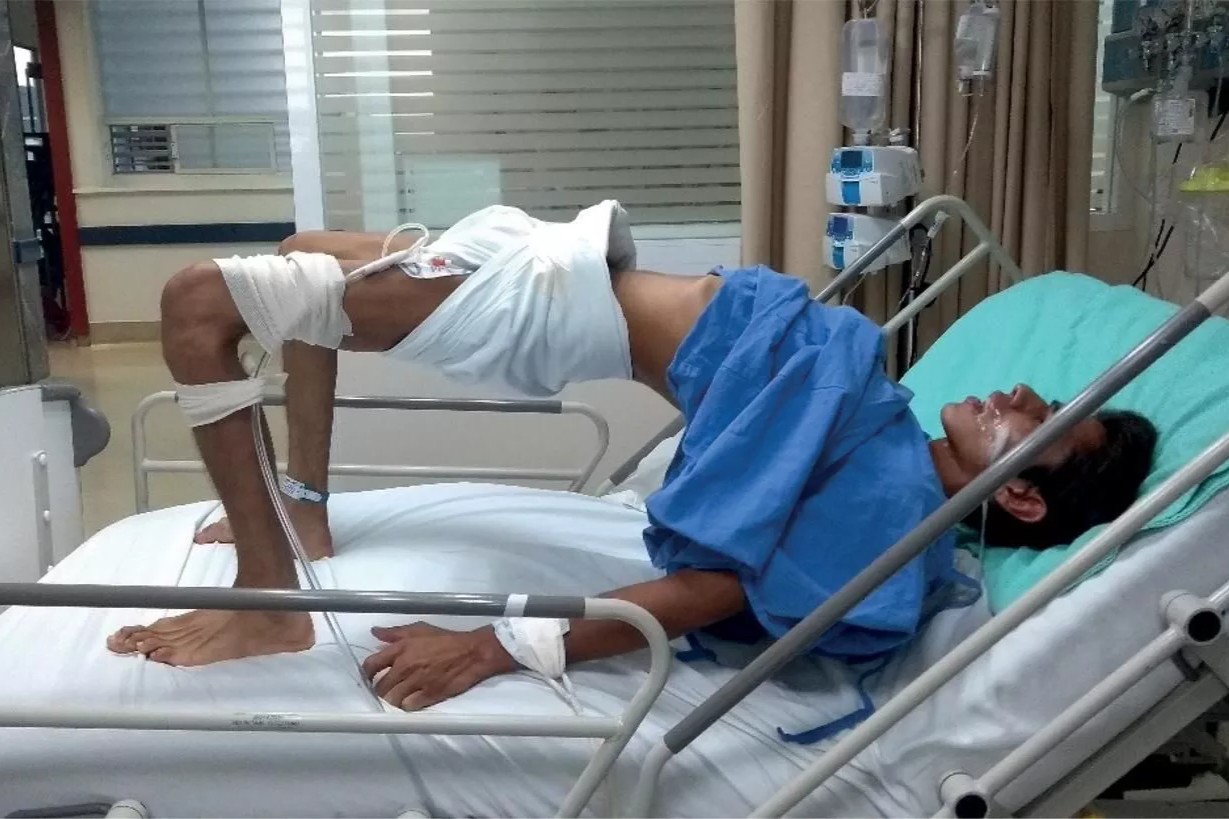
Opisthotonos might sound like a complex medical term, but it's actually quite fascinating. Opisthotonos is a condition where the body arches severely due to muscle spasms, often seen in severe cases of tetanus or meningitis. Imagine your body forming a rigid bow, with only your head and heels touching the ground. This dramatic posture can be alarming, but understanding its causes and implications is crucial. From historical references to modern medical insights, Opisthotonos has intrigued doctors and historians alike. Let's dive into 27 intriguing facts about this condition, shedding light on its origins, symptoms, and treatments. Whether you're a medical student, history buff, or just curious, these facts will provide a comprehensive look at Opisthotonos.
What is Opisthotonos?
Opisthotonos is a medical condition characterized by severe muscle spasms causing the body to arch backward. This condition often indicates serious neurological issues. Here are some intriguing facts about Opisthotonos.
-
Opisthotonos is a Symptom: It is not a disease itself but a symptom of underlying conditions like tetanus, meningitis, or severe brain injury.
-
Historical Observations: Ancient physicians, including Hippocrates, documented cases of Opisthotonos, highlighting its long-known association with severe illnesses.
-
Tetanus Connection: One of the most common causes is tetanus, a bacterial infection that affects the nervous system.
-
Meningitis Indicator: It can also signal meningitis, an inflammation of the protective membranes covering the brain and spinal cord.
-
Brain Injury Sign: Severe brain injuries, especially those affecting the brainstem, can lead to Opisthotonos.
-
Newborns and Infants: This condition is sometimes seen in newborns and infants, often indicating serious neurological issues.
-
Cerebral Palsy: Children with severe cerebral palsy may exhibit Opisthotonos due to abnormal muscle tone and reflexes.
-
Poisoning Cases: Certain types of poisoning, such as strychnine poisoning, can cause this severe muscle spasm.
-
Drug Reactions: Adverse reactions to certain medications, particularly those affecting the central nervous system, can trigger Opisthotonos.
-
Severe Infections: Infections like encephalitis, which causes brain inflammation, can result in this condition.
Symptoms and Diagnosis
Understanding the symptoms and how doctors diagnose Opisthotonos helps in recognizing and treating it promptly.
-
Arching Back: The most noticeable symptom is the severe arching of the back, with the head and heels bent backward.
-
Muscle Stiffness: Extreme muscle stiffness and rigidity accompany the arching, making movement difficult.
-
Painful Spasms: These muscle spasms are often painful and can last for several minutes.
-
Breathing Difficulties: Severe cases can affect breathing, as the chest muscles are involved in the spasms.
-
Diagnostic Tests: Doctors use a combination of physical examination, patient history, and diagnostic tests like MRI or CT scans to identify the underlying cause.
-
Blood Tests: Blood tests can help detect infections or toxins that might be causing the symptoms.
-
Neurological Exams: Detailed neurological exams assess the extent of the nervous system involvement.
Treatment and Management
Treating Opisthotonos involves addressing the underlying cause and managing symptoms to provide relief.
-
Antibiotics for Infections: If an infection like tetanus or meningitis is the cause, antibiotics are crucial.
-
Antitoxins: In cases of poisoning, antitoxins may be administered to neutralize the toxin.
-
Muscle Relaxants: Medications to relax muscles can help alleviate the painful spasms.
-
Sedatives: Sedatives may be used to calm the nervous system and reduce muscle rigidity.
-
Supportive Care: In severe cases, supportive care in a hospital setting, including respiratory support, may be necessary.
-
Physical Therapy: Physical therapy can help improve muscle function and prevent complications from prolonged immobility.
-
Surgery: In rare cases, surgery might be required to relieve pressure on the brain or spinal cord.
Prognosis and Complications
The outlook for individuals with Opisthotonos depends on the underlying cause and the timeliness of treatment.
-
Variable Prognosis: The prognosis varies widely; some recover fully with treatment, while others may have lasting neurological damage.
-
Potential Complications: Complications can include respiratory failure, permanent muscle damage, or neurological deficits.
-
Importance of Early Treatment: Early diagnosis and treatment are crucial for improving outcomes and preventing severe complications.
Final Thoughts on Opisthotonos
Opisthotonos, a rare condition, can be alarming but understanding its causes and symptoms helps. Often linked to severe neurological issues like tetanus or meningitis, opisthotonos involves extreme muscle contractions causing the body to arch backward. Recognizing early signs, such as stiffness and spasms, can be crucial for timely medical intervention. Treatment usually focuses on addressing the underlying cause, which might include antibiotics for infections or muscle relaxants to ease spasms.
Awareness is key. Knowing the facts about opisthotonos can make a difference in managing this condition effectively. If you or someone you know shows symptoms, seeking medical advice promptly is essential. Stay informed, stay prepared, and remember that early detection can lead to better outcomes.
Was this page helpful?
Our commitment to delivering trustworthy and engaging content is at the heart of what we do. Each fact on our site is contributed by real users like you, bringing a wealth of diverse insights and information. To ensure the highest standards of accuracy and reliability, our dedicated editors meticulously review each submission. This process guarantees that the facts we share are not only fascinating but also credible. Trust in our commitment to quality and authenticity as you explore and learn with us.
